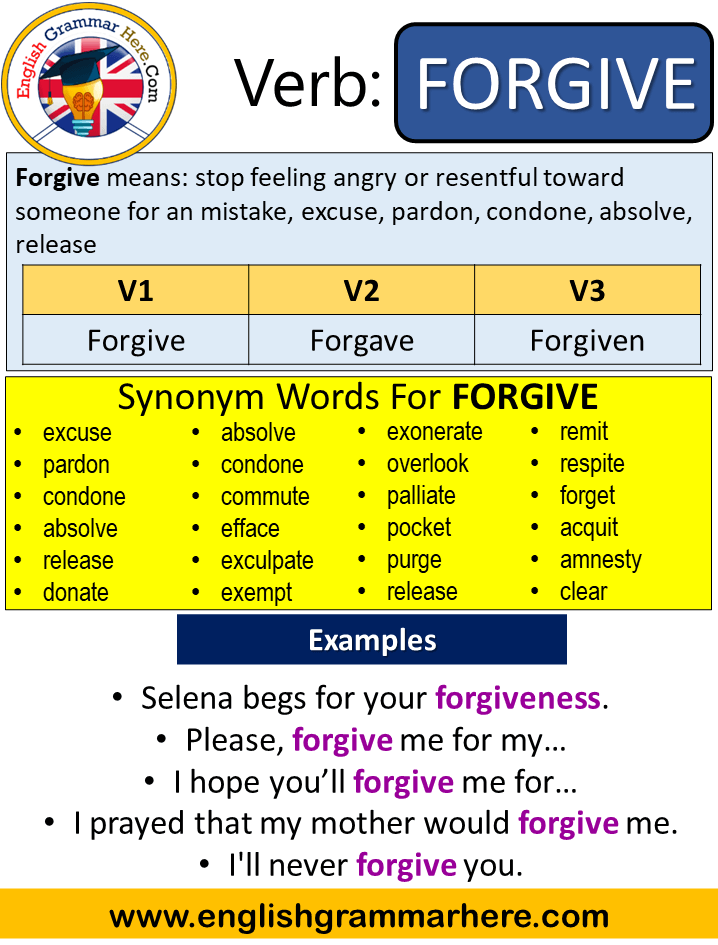

Knowing the various verb forms is a good starting point for learning all these complicated rules and exceptions.

With others, they are all different (e.g., drink, I drank, I had drunk). With other verbs, the base form, past form, and past participle form are the same (e.g., set, I set, I had set).

Learning the verb forms (including the past form) is useful when studying English because it allows teachers and students to talk about the components that form the various tenses.įor example, with some verbs, the past form and the past participle form are the same (e.g., I played, I had played). Past Form of Regular Verbs Regular verbs form their past forms by adding -ed or -d. It depends on whether the verb is regular or irregular. The past participle form does not have an alternative name. Forming the Past Form There is no simple rule for creating the past form (i.e., the simple past tense) of a verb. third person singular present tense form.The table below shows the five verb forms in English. Past form is completely different from the base from Past form has a vowel change from the base form Here are some more examples of past forms of irregular verbs: lead (pronounced LEED)> led (pronounced LED).read (pronounced REED) > read (pronounced RED).Here are some common irregular verbs with tricky past forms: Past Form of Irregular Verbs Irregular verbs form their past forms in a number of ways. Read more about the spelling rules for creating the past forms of regular verbs. In American English, the standardised usage is fit. (double the last consonant if the verb ends and is end stressed) What you use for the past tense of fit depends on whether you are using the general American English derived version or the British English one. Here are some more examples of past forms of regular verbs: There are some spelling rules to consider too. the present participle of cut is cutting. It depends on whether the verb is regular or irregular. the third person singular simple present indicative form of cut is cuts. There is no simple rule for creating the past form (i.e., the simple past tense) of a verb. The action may have been in the recent past or a long time ago. What matters is that the action was completed in the past. In the Simple Past the process of performing the action is not important. The past form is not the same as the past tense, although many people use the terms interchangeably. The Past Simple Tense is used to refer to actions that were completed in a time period before the present time. (also called the Present Participle Form) (also called the Third Person Singular Present Tense Form)

Translate cut in context, with examples of use and definition. Let's look at all five forms of the verb "to catch": Past Participle cut cut find found draw drew choose chosen sank sunk wear wore forgot forgotten speak spoke shut shut crept crept. Conjugate the English verb cut: indicative, past tense, participle, present perfect, gerund, conjugation models and irregular verbs. Present and Past Progressive Tense Dice Game. Past, Present and Future Verbs in Sentences Sorting Worksheet. The past form is one of five verb forms in English. Answer (1 of 10): Dear M Anonymous, To cut is one of those irregular verbs where the simple past tense is identical to its past participle. 1,970 Top 'Past Tense Worksheet Cut And Stick' Teaching Resources curated for you. The past form is the form used to show the simple past tense. What Is the Past Form of a Verb? (with Examples) Why the Past Form of a Verb Is Important.editing education Facebook Final Draft Globe Theatre grammar Grammar Girl grammar satire how-to i.e. a/an/the abbreviation academic degree apostrophe articles artist date book review books on writing business of writing Cambridge capitalization character collective nouns colon commas copywriting cover letters creative life creative process deadlines dependent clause e.g.


 0 kommentar(er)
0 kommentar(er)
